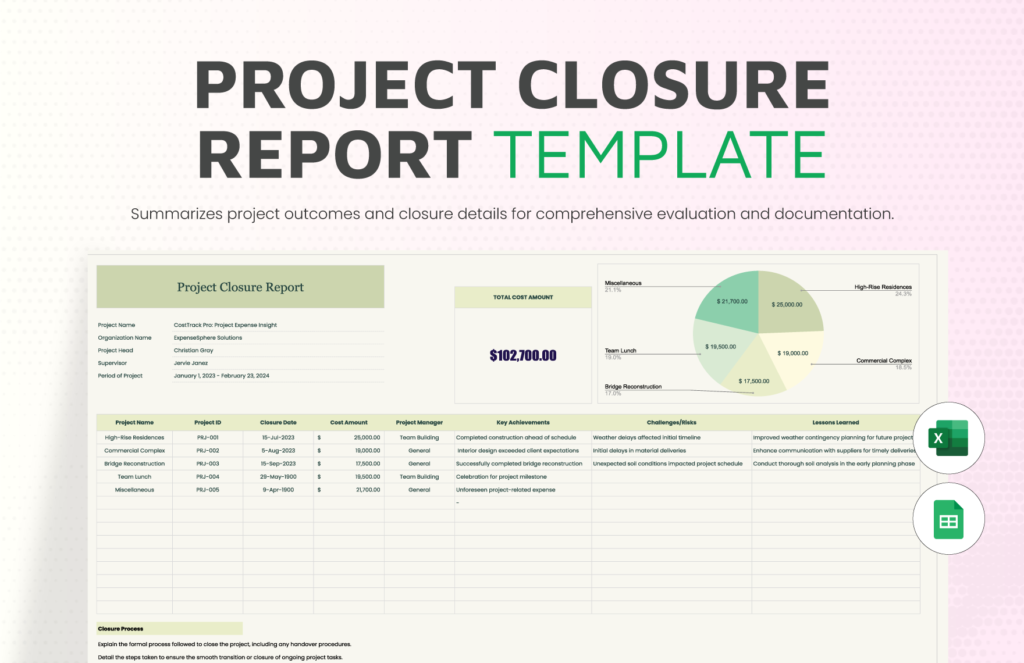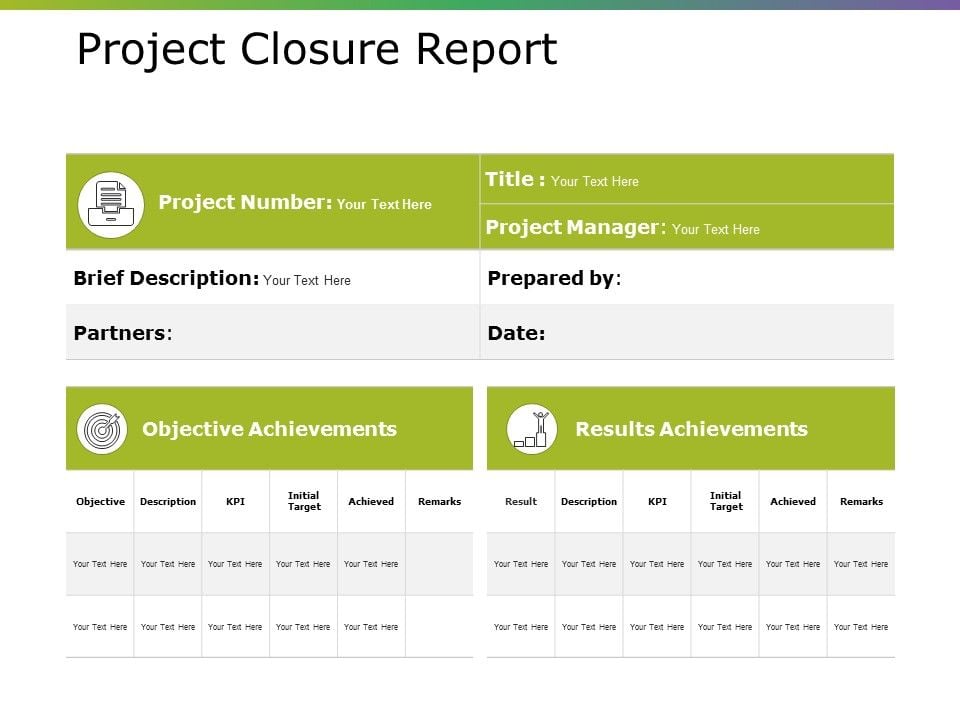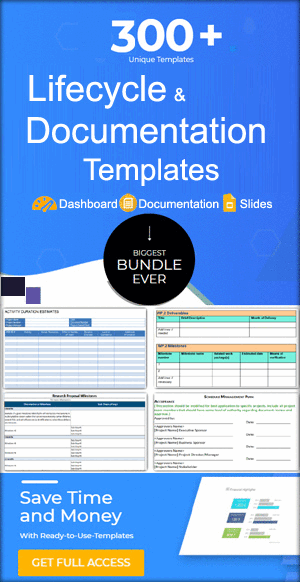Project Closure Report Template

A Project Closure Report Template is a structured document used to formally conclude a project. It summarizes key activities, deliverables, lessons learned, and outcomes. This document ensures all objectives are met, resources are released, and stakeholders are informed about the project’s success or challenges.
Introduction:
Every project has a lifecycle: initiation, planning, execution, monitoring, and closure. While most teams focus on execution, project closure is equally important. This template helps ensure a smooth transition, document insights, and finalize deliverables. Without it, projects risk lingering issues, unresolved tasks, and miscommunication.
This guide explores the components, benefits, and implementation of a project closure report template Word format. Whether you’re managing an IT rollout, a marketing campaign, or a construction project, this structured approach will optimize your workflow and enhance accountability.
Check out Change Management Plan Template as a Related Template.

Why it is Important?
Many organizations overlook project closure, leading to inefficiencies and repeated mistakes. A project closure report ensures:
- Accountability: Clearly defines who is responsible for final tasks.
- Lessons Learned: Documents successes and failures for future improvements.
- Resource Optimization: Releases team members for other projects.
- Stakeholder Communication: Provides a clear summary of the project’s final status.
- Formal Sign-Off: Ensures all deliverables are met before officially closing.
A structured project closure report template Word format makes this process efficient and standardized.
Related Content: Project Status Report Template in Excel
Key Components:
This template includes the following sections:
1. Project Overview
- Project Name: Clearly state the project title.
- Project Manager: Identify the responsible person.
- Start & End Date: Define the project timeline.
- Project Objectives: Summarize goals and scope.
2. Final Deliverables & Milestones
- List all completed deliverables and compare them to the initial plan.
- Highlight major milestones achieved throughout the project.
- Attach relevant documentation, such as final reports and test results.
3. Budget & Financial Summary
- Planned vs. Actual Budget: Show any discrepancies.
- Cost Overruns: Identify unexpected expenses and their causes.
- Remaining Funds: State if any budget remains unutilized.
4. Risk & Issue Log
- Major risks encountered and how they were mitigated.
- Unresolved issues and their potential impact.
- Recommendations for handling similar risks in future projects.
5. Lessons Learned
- What worked well? Identify successful strategies.
- What went wrong? Document failures and inefficiencies.
- Recommendations for future projects to avoid similar challenges.
6. Stakeholder Feedback
- Client or Sponsor Comments on project success.
- Team Insights on collaboration and execution.
- Lessons for Process Improvement from key participants.
7. Next Steps & Recommendations
- Handover Plan: Transition of deliverables to operational teams.
- Post-Implementation Support: Any ongoing maintenance requirements.
- Final Approval: Signature section for stakeholders to formally close the project.
Related Content: Critical Path Method Template in Excel
How to Implement This Template Effectively:
Step 1: Gather Data & Documentation
Compile reports, budgets, and performance metrics.
Step 2: Conduct a Project Review Meeting
Engage stakeholders and team members to discuss outcomes and lessons learned.
Step 3: Complete the Project Closure Report
Fill out each section of the project closure report template Word format, ensuring accuracy.
Step 4: Obtain Formal Approvals
Ensure all stakeholders sign off before officially closing the project.
Step 5: Archive for Future Reference
Store the report for future projects and audits.
Related Article: Project Implementation Plan Template
Benefits:
- Standardization: Ensures all projects follow a consistent closing process.
- Efficiency: Saves time by using a pre-formatted template.
- Accountability: Clearly documents responsibilities and outcomes.
- Knowledge Retention: Captures valuable insights for future projects.
Personal Experience:
I have used this template in multiple projects, and it has been a game-changer. The structured format makes it easy to document final deliverables, track lessons learned, and ensure all stakeholders sign off. Personally, I love this template because it provides clarity, reduces project risks, and keeps everything well-documented for future reference. Whether working on a software implementation or an infrastructure project, this template has consistently helped me close projects efficiently and professionally.
Related Article: Project management
Conclusion:
This template is essential for successful project management. It provides a structured approach to formally end projects, ensuring all objectives are met, and valuable insights are documented. Whether you’re using this template in Word or a customized format, following this structured approach will enhance efficiency and project success.
By implementing a project closure report, organizations can improve accountability, optimize resources, and continuously refine their project management practices.
(FAQs):
Q.1 How do you write a project closure report?
To write a project closure report, include an overview of the project, final deliverables, budget summary, risks encountered, lessons learned, and stakeholder feedback. Use this template to ensure completeness and consistency.
Q.2 What are the 5 types of project closure?
- Normal Closure: The project meets all objectives successfully.
- Premature Closure: The project ends before completion due to budget cuts or changes in business priorities.
- Perpetual Closure: Continuous projects without a formal end, often needing intervention.
- Failed Closure: The project is closed due to failure to meet objectives.
- Changed Priority Closure: The organization shifts focus, leading to project termination.
Q.3 How do you write a project final report?
A project final report includes an executive summary, key deliverables, financial summary, risks and resolutions, stakeholder feedback, and future recommendations. A structured project closure report template helps streamline this process.








